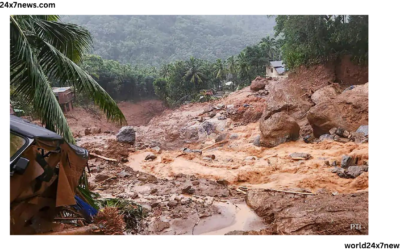Artificial Rain in Delhi: Transforming the Sky for a Cleaner Tomorrow

Artificial Rain in Delhi: Transforming the Sky for a Cleaner Tomorrow
Delhi, the heart of India, has long been grappling with severe air pollution, impacting both its residents’ health and the environment. In the pursuit of cleaner air, the concept of artificial rain has emerged as a potential solution. This article explores the intricacies of artificial rain, its significance in the context of Delhi’s pollution crisis, and the various aspects surrounding its implementation.
The Need for Artificial Rain in Delhi
Overview of Delhi’s Air Pollution Problem
Delhi’s air quality index has been a cause for concern, reaching hazardous levels during certain periods. The ever-increasing levels of particulate matter and pollutants pose a threat to public health and the overall well-being of the city.
Impact on Public Health and the Environment
The consequences of prolonged exposure to polluted air are dire. Respiratory issues, cardiovascular diseases, and other health problems have become prevalent. Additionally, the environment suffers as ecosystems are disrupted, affecting flora and fauna.
How Artificial Rain Works
Explanation of the Process
Artificial rain involves the introduction of various substances into the atmosphere to induce precipitation. This process helps in clearing the air from pollutants and improving overall air quality.
Technology Involved in Creating Artificial Rain
Cutting-edge technology, including cloud seeding techniques, plays a crucial role. Scientists use aircraft or ground-based generators to disperse substances like silver iodide into clouds, promoting the formation of raindrops.
Successful Instances of Artificial Rain Implementation
Examples from Other Regions or Countries
Several countries have successfully implemented artificial rain to combat pollution. Case studies highlight positive outcomes, demonstrating the efficacy of this approach.
Positive Outcomes and Benefits Observed
Notable improvements in air quality, reduced health risks, and revitalized ecosystems are among the benefits observed in areas where artificial rain has been implemented.
Challenges in Implementing Artificial Rain
Environmental Concerns
Critics argue that artificial rain may have unintended environmental consequences. The introduction of certain substances into the atmosphere raises questions about the long-term impact on ecosystems.
Technological Limitations
Despite advancements, challenges persist in perfecting the technology. Precision in targeting specific areas and controlling the intensity of rainfall are areas that require further research.
Research and Development in Artificial Rain Technology
Ongoing Projects and Advancements
Scientists worldwide are engaged in ongoing research to enhance artificial rain technology. Innovations aim to address existing limitations and make the process more efficient.
Future Prospects for Improving the Technology
The continuous evolution of technology holds promise for overcoming current challenges, making artificial rain an even more viable solution for Delhi’s air quality woes.
Public Perception and Acceptance
Awareness of Artificial Rain Among the Public
Public awareness of artificial rain as a potential solution to air pollution is crucial. Communicating the benefits and dispelling misconceptions are key components in gaining public acceptance.
Attitudes and Opinions Regarding Implementation in Delhi
Understanding how residents perceive and accept the idea of artificial rain is essential for successful implementation. Public opinion can influence policy decisions and the overall success of the initiative.
Government Initiatives and Policies
Steps Taken by the Government to Address Air Pollution
Delhi’s government has taken proactive measures to tackle air pollution. The inclusion of artificial rain in environmental policies showcases a commitment to exploring innovative solutions.
Inclusion of Artificial Rain in Environmental Policies
The integration of artificial rain into government policies reflects a comprehensive approach to address air quality concerns, signaling a shift towards sustainable solutions.
Collaborations and Partnerships
Involvement of International Organizations
Collaborations with international organizations bring global expertise and resources to the table. Shared knowledge and experiences contribute to the success of artificial rain initiatives.
Cooperation with Scientific Communities and Experts
Engaging with scientific communities ensures a multidisciplinary approach. The collaboration fosters innovation and creates a conducive environment for solving complex challenges.
Economic Impact
Analysis of the Economic Benefits
Beyond environmental improvements, artificial rain can have positive economic impacts. Industries related to clean energy, agriculture, and tourism may experience growth.
Potential Industries that May Thrive with Cleaner Air
A cleaner atmosphere can stimulate the growth of industries that rely on a healthy environment, creating opportunities for economic development.
Expert Opinions
Insights from Meteorologists and Environmental Scientists
Experts in meteorology and environmental science provide valuable insights into the feasibility and potential consequences of artificial rain in Delhi.
Critiques and Endorsements of Artificial Rain in Delhi
Differing opinions within the scientific community highlight the complexity of the issue. Critiques and endorsements contribute to refining the approach and addressing concerns.
Future Outlook
Predictions for the Impact on Delhi’s Air Quality
As artificial rain initiatives progress, predictions for significant improvements in Delhi’s air quality offer hope for a better future.
Potential Advancements in Artificial Rain Technology
Anticipated technological advancements may pave the way for more targeted and efficient artificial rain processes, further enhancing its effectiveness.
Community Involvement
How Residents Can Contribute to the Success of Artificial Rain
Community engagement is vital. Residents can contribute by supporting initiatives, staying informed, and adopting practices that reduce individual carbon footprints.















